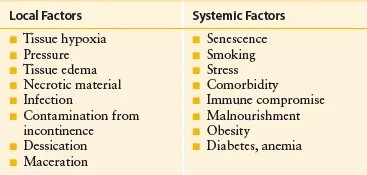A client with a history of lung cancer reluctantly comes to the clinic because of persistent hoarseness and a chronic cough. The client's respirations are labored when speaking and the capillary refill is 3 seconds. Which additional finding warrants intervention by the nurse?
Coarse breath sounds.
Rust colored sputum.
Unexplained fatigue.
Clubbed fingernails.
The Correct Answer is A
The client's history of lung cancer, persistent hoarseness, chronic cough, and labored respirations when speaking indicate potential respiratory complications. Coarse breath sounds may suggest the presence of airway obstruction or fluid accumulation in the lungs, which can be indicative of a worsening condition.
The nurse should intervene promptly by assessing the client's respiratory status further, providing appropriate respiratory support, and notifying the healthcare provider for further evaluation and intervention.
Nursing Test Bank
Naxlex Comprehensive Predictor Exams
Related Questions
Correct Answer is C
Explanation
Imbalanced Nutrition: less than body requirements would be the nursing problem with the highest priority for an adolescent with anorexia nervosa. Anorexia nervosa is characterized by a severe restriction of food intake leading to a significantly low body weight, which can have serious physical and psychological consequences. Therefore, addressing the client's malnutrition and promoting adequate nutrition intake is crucial to prevent further complications. Disturbed Body Image, Interrupted Family Processes, and Noncompliance with treatment regimen are important nursing problems to address, but they are secondary to the client's malnutrition.
Correct Answer is ["B","D"]
Explanation
The age-related factors that may factor into this client's wound healing are: Decreased epidermal turnover: As people age, the turnover of skin cells decreases, resulting in slower wound healing. This can prolong the healing process and increase the risk of complications.
T-cell function decrease: The immune system's function, including T-cell function, tends to decline with age. T-cells play a crucial role in the immune response and wound healing. Decreased T-cell function can impair the body's ability to fight infection and promote efficient healing.
Insulin resistance and pigmentation changes are not directly age-related factors that impact wound healing. Insulin resistance is a condition related to impaired glucose metabolism and can affect wound healing in individuals with diabetes or other metabolic disorders, but it is not necessarily an age-related factor. Pigmentation changes are primarily cosmetic and do not directly affect the physiological processes involved in wound healing.

Whether you are a student looking to ace your exams or a practicing nurse seeking to enhance your expertise , our nursing education contents will empower you with the confidence and competence to make a difference in the lives of patients and become a respected leader in the healthcare field.
Visit Naxlex, invest in your future and unlock endless possibilities with our unparalleled nursing education contents today
Report Wrong Answer on the Current Question
Do you disagree with the answer? If yes, what is your expected answer? Explain.
Kindly be descriptive with the issue you are facing.
